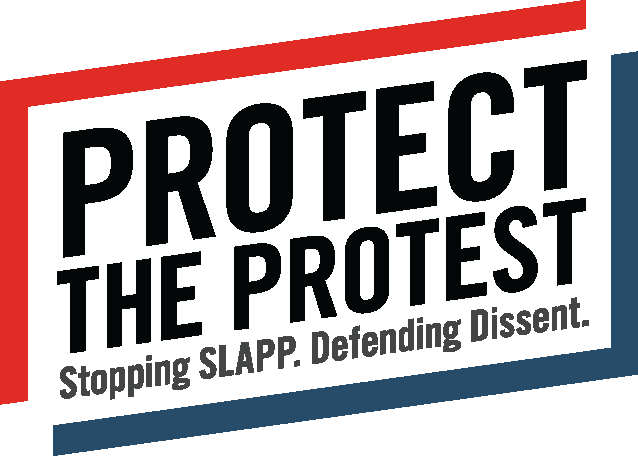Silencing Standing Rock: How 14 States Are Protecting Big Oil Over People
Co-authored by Pat Handlin and Paul Paz y Miño
You probably already know that we are bracing ourselves for the trial starting on February 24 in the SLAPP lawsuit brought by Energy Transfer (ET) against Greenpeace. Support for the environmental nonprofit and for the protection of free speech and protest rights have been drumming up worldwide in anticipation. You probably don’t know that there is an equally dangerous SLAPP, involving many of the same actors, unfolding on the same #NoDAPL (Dakota Access Pipeline) protest movement stage: 14 U.S. states have intervened to do the bidding of a fossil fuel company and are SLAPPing an Indigenous Nation in order to silence them.
In October 2024, the Standing Rock Sioux Tribe (SRST) filed a lawsuit against the United States Army Corps of Engineers (USACE) to shut down DAPL. The Tribe’s claims include the destruction of sacred sites, environmental harm caused and concealed by ET during construction, the lack of a functional spill-response plan, and criminal convictions against ET’s owners resulting in a federal debarment that makes them ineligible for a new federal permit to cross the Missouri River. While the unlawfulness of the pipeline and the practices of ET are shocking (but not surprising), what is more appalling is what has happened next in this case.
Fourteen U.S. states have filed two unprecedented Motions to Intervene in the case, though DAPL has no direct presence in some of the states involved. Since ET has not directly intervened in the case, the intervention of states reveals a dangerous motive to serve as a proxy for corporate interests—part of a growing trend of corporatocracy on the rise. Their motive is to keep oil flowing and to protect DAPL from being shut down. What this means is that government actors, funded by taxpayer dollars, are employing SLAPP tactics on behalf of a fossil fuel company in an attempt to supersede Tribal jurisdiction and silence the Tribe. The states primarily argue that they have an “economic interest” in DAPL continuing to function, but their argument has little merit and constitutes a diversion from the important issues raised by the Tribe in the litigation.
The states fail to mention their interest in a clean and healthy environment, guaranteed by many state constitutions and they ignore the potential for spills into the Missouri River watershed which could impact drinking water for millions in addition to agriculture, fishing and recreation. They also fail to mention the past environmental destruction caused by ET in North Dakota, Ohio and Pennsylvania, which is explicitly identified in the case itself. They ignore the deceit exercised by ET in hiding the environmental degradation they wrought, their abysmal safety record, and their federal debarment. So, it appears that the intervention by these states has little merit in the litigation itself, other than to require additional work by Tribal Plaintiffs and for use as a talking point for ET, something to distract from the vital issues raised by the Tribe which are in the best interests of the citizens of these intervenor states.
The intervention has the same impact on this litigation as a SLAPP lawsuit or SLAPP subpoena has on the party being served: it seeks to silence critics by making them defend themselves in court, costing money and time, diverting from the important issues at hand and trying to dissuade them from continuing to produce negative publicity for the businesses, government officials, or other powerful entities who often use SLAPPs against people who express their First Amendment rights or in this case, rights to clean water and legally recognized Treaty rights.
Although this is not a traditional SLAPP lawsuit, the 14 states’ motions to intervene mirror SLAPP tactics. Rather than addressing the real dangers posed by DAPL and ET’s track record of environmental violations, these states have chosen to weaponize the courts against the Standing Rock Sioux Tribe. Their intervention is a blatant attempt to drown out Indigenous voices, shield corporate polluters, and suppress the truth. If states can succeed in using the judicial system to silence those fighting for clean water and Treaty rights, who will they come for next?
Paul Paz y Miño is the Deputy Director at Amazon Watch. He has been a professional human rights, environmental justice, and Indigenous rights advocate for over 30 years.
Pat Handlin is a lawyer from Chicago who successfully represented Water Protectors charged at Standing Rock. She is a former board member and cooperating attorney with the Water Protector Legal Collective.
Post photo by Ryan Vizzions
